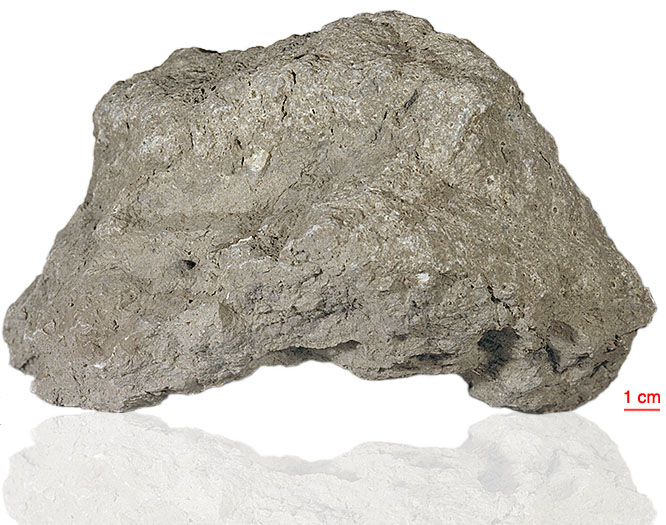
Fact sheet
The hand specimen of 76055 appears to be relatively homogeneous and clast free, but the thin sections show many minute clasts. The rock contains a prominent foliation that is defined by many small lenticular vesicles (or vugs) up to 0.2 x 3 mm in size.
76055 is a coherent polymict breccia with a fine-grained vesicular groundmass. Lithic clasts include (a) metatroctolite with a poikiloblastic matrix that is coarser grained than the breccia matrix, (b) “dunite” cataclasite, (c) “anorthosite” cataclasite and (d) felsic melt rock with an uneven ophitic to intersertal texture. The vesicular matrix of 76055 is holocrystalline and consists of ~10% subangular plagioclase and olivine clasts set in a finer-grained poikilitic matrix of subhedral orthopyroxene intergrown with anhedral plagioclase. Rotation 1 shows an olivine-rich clast and rotation 2 shows a rounded clast of plagioclase feldspar with inclusions of pink spinel.
The sample weighed 6412 grams before analysis and has been dated at 4.05±0.07 billion years old (Ar/Ar).
Further details of this and other Apollo samples are here: http://curator.jsc.nasa.gov/lunar/
Apollo 17, the final manned landing mission, had two objectives: to obtain samples of ancient rocks from the lunar highlands and to look for evidence of younger volcanic activity on the valley floor.
This small Collection contains material deriving from both periods, including igneous rocks around 4.3 billion years old from the lunar highlands as well as younger volcanic samples dating from about 3.6 billion years ago.
Apollo 17 was launched on 7 December 1972.






